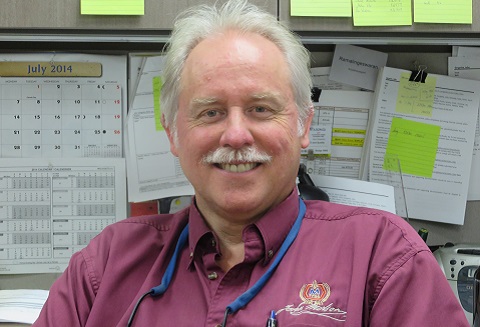Cool job: Beer taster
This spring marked a 30-year work anniversary for John Gergesha (BSc 1979 New) at Molson Coors Brewing Company. After graduating with a major in chemistry, he worked as a lab chemist and a medical technologist before jumping at the chance to join Molson Coors. As one of two quality specialists at the Toronto brewery, he’s responsible for beer analysis and control — from bottle caps and labels to product integrity and microbiological issues for 11 of the company’s brands.
Drinking beer is part of your job description. Some people would say you have the perfect job.
I like to joke with my friends that all I do is drink beer all day, but I take my work very seriously. Beer has only four major ingredients—water, malt, barley, and hops — but its analysis is extremely complex. Actually, I only participate in the tasting panels about three times per week — I do need to drink to stay in practice, though!
Describe the tasting panel.
It’s almost like forensic work, but with beer. We have two tasting panels every day, one at 9 a.m. and one at 11 a.m. That is supposed to be the optimal time because our senses are at their most heightened. We sample throughout all stages and processes to see if there are any issues with the flavours, or the water. If we detect a problem, we try to fix it early. In 30 years, I’ve only seen one or two batches completely dumped. It’s a shame to see all that beer go down the drain.
What kinds of flavours do you look for?
Flavours develop from a combination of fermentation time and the types and qualities of the ingredients. We do want some of these flavours — such as banana esters in Coors Light, or the slight sulphur taste in some ales. Some of them are not good, and some of them are only good in small parts-per-million. Diacetyl tastes like movie-theatre buttered popcorn and has a fatty-acid type mouth-feel. It is desirable at lower levels.
We also pinpoint off-flavours to correct them. For example, the active chemical component in hops is isohumulone. When this compound reacts with the sun’s UV rays, it can cause beer to develop a skunky flavour. That’s why beer is usually packaged in amber-coloured bottles— to filter UV light. (It’s also why hipsters put a lime wedge in a bottle of Corona, which has a clear bottle; the acidity counteracts the skunkiness.)
How does one become a beer taster?
Anyone who serves on a tasting panel must undergo in-house training. We recertify every year. We are given nine samples and we need to correctly identify each one.
Do you do anything special to prepare your palate?
Tasting is a full sensory experience. You use your nose, mouth, and tongue. I’ll have a few unsalted crackers to cleanse the palate.
After 30 years at a major brewing corporation, you must have learned how to pour the perfect pint. Spill.
I know this sounds incredibly specific, but you should angle the glass at 45 degrees and aim to pour the beer at about three inches below the lip of the glass. There should be about an inch of foam—or head—at the top.
Is ice-cold beer the way to go?
The perfect temperature is between four and eight degrees. I actually had a German colleague who thought we served our beer too cold in Canada, so he’d put it in the microwave to warm it up!
How has your chemistry degree informed your work?
It’s been a huge help. I also took computer science courses, which helped me when I started to work in a lab. I acquired many useful skills over my four years at U of T, more than I even realized at the time. I learned to study, research, organize my thoughts, communicate effectively, and interact with different types of people. I also had four years of beer training at the Thursday and Friday pub nights at Victoria College and New College!
How do you toast?
Being of Ukrainian descent, I usually tip my glass to nazdarovya — to your health!





